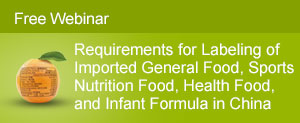The National Standard GB 31604.1-2015 General Rules for Migration Test of Food Contact Materials and Articles in China is in the similar position with Annex 3 and 5 of (EU) 10/2011 in Europe. However, the differences of regulations between Europe and China lead to the trade barrier of imported and exported food contact materials and articles. In order to avoid the confusion, the difference of application scope, food simulant selection, test condition selection and others pertaining to the migration test in these two standards are listed as follows:
Application Scope of the Two Standards
(EU) 10/2011 is applicable to:
- Materials and articles and parts thereof consisting exclusively
- Plastic multi-layer materials and articles held together by adhesives or by other means;
- Materials and articles referred to in points 1 or 2 that are printed and/or covered by a coating
- Plastic layers or plastic coatings, forming gaskets in caps and closures, that together with those caps and closures compose a set of two or more layers of different types of materials
- Plastic layers in multi-material multi-layer materials and articles
GB 31604.1-2015 is applicable to:
All kinds of food contact material and article that directly or indirectly come into contact with food, for example:
- Food contact plastic used as food packaging, container, kitchen utensil or used in production process, food contact facility or others.
- Food contact rubber used as food packaging, container, kitchen utensil or used in production process, food contact facility or others.
- Food contact metal used as food packaging, container, kitchen utensil or used in production process, food contact facility or others.
- Food contact paper used as food packaging, container, kitchen utensil or used in production process, food contact facility or others.
- Food contact coating used in food packaging container, kitchen utensil or others.
- Food contact ink in food packaging container, kitchen utensil or others.
- Food contact adhesive in food packaging container, kitchen utensil or others.
Food Simulant Selection
| (EU) 10/2011 | GB 31604.1-2015 |
| For dried solid food, the poly(2,6-diphenyl-p-phenylene oxide), particle size 60-80 mesh, pore size 200 nm could be used asfood simulant. | For dried solid food without fats in the surface (e.g. starch, solid candy and etc.), there is no food simulant could be used and the migration test maybe exempted because of the lower migration risk. |
| All migration tests will use the food simulants. | If the food contact material or article has already contact the food, the migration test will be conducted by using the food. If the food contact material or article has not contact the food yet, the food simulant will be selected based on the expected food. |
Test condition Selection
| (EU) 10/2011 | GB 31604.1-2015 |
| For frozen and chilled food, if the food in the container should be heated before eating, it is not necessary to conduct additional overall migration tests. | For frozen and chilled food, if the food in the container should be heated before eating, besides the overall migration test with 20℃,10d condition, an additional overall migration test with 100℃,2h is also mandatory. |
| If the food contact time is less than 5 minutes, the specific migration test time could be 5 minutes. | If the food contact time is less than 30 minutes (including less than 5), the specific migration test time is still 30minutes. |
Calculation Method
| (EU) 10/2011 | GB 31604.1-2015 |
| If the volume of the container is less than 500ml, the S/V (contact area/volume of food simulant) could be 6. | The S/V (contact area/volume of food or food simulant) should be calculated based on the most demanding using condition. |
CIRS Suggestions
As the migration test is a vital step to check the safety of the food contact material and article, the migration test method and calculation method will exercise an influence on the regulatory compliance of the product. Therefore, the difference in the details between two standards may cause the risk when importing food contact material or articles into China. CIRS recommend oversea food contact material manufacturers and exporters to arrange the pre-testing according to Chinese regulations with the purpose of avoiding regulatory risk when importing.
For further information regarding regulatory compliance of FCM import procedures, please kindly click here .
Contact us
Ms. Cathy Yu Team Leader of Food Safety and Regulatory Affairs Department, CIRS China
11F Dongguan Building, 288 Qiuyi Road, Binjiang District, Hangzhou, China, 310020
Tel : +86 571 8720 6538 | Fax : +86 571 8720 6533
Email: cathy.yu@cirs-group.com






